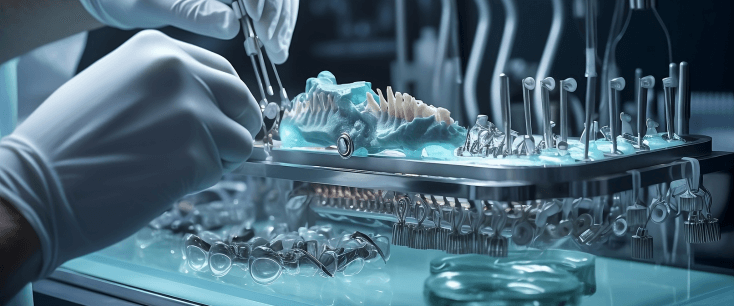
How to sharpen dental scalers?
Dental Scalers are examples of sharp hand devices that are used for scaling and root planning because they are good at removing hard deposits from teeth. Dull tools have the drawback of taking longer to finish procedures and putting the patient and the operator through pain and effort. Instead of removing calculus from teeth, dull scalers will just glide over the surface of the tooth.
Dental instruments should be regularly sharpened to avoid any issues. These are our best recommendations for maintaining the sharpness and use of your dental tools.
Need for Sharpening
Dental tool sharpening tools come in a range of varieties. Additionally, the most often used solution is stone sharpening. They might be artificial, like ceramic stones, or biological, like Arkansas.
Importance of Sharp Dental Scalers
Dental scalers are fundamental tools used by dental professionals to remove plaque, tartar, and stains from teeth. Moreover, a sharp scaler not only enhances efficiency during procedures but also reduces the risk of tissue trauma and discomfort for the patient.
Materials Required
Gather the necessary tools before commencing the sharpening process:
Dental scalers
Sharpening stones (Arkansas or ceramic)
Medical-grade honing oil (for Arkansas stones)
Water (for ceramic stones)
Cleaning brush with firm bristles
Mild detergent
Step-by-Step Sharpening Process
1. Assessing Scaler Condition
Select an appropriate sharpening stone based on the scaler’s condition. For minor touch-ups and a finer stone suffices, while heavily worn scalers may require a coarser stone.
2. Choosing the Right Stone
Select an appropriate sharpening stone based on the scaler’s condition. For minor touch-ups, a finer stone suffices, while heavily worn scalers may require a coarser stone.
3. Preparing the Stone
If using an Arkansas stone, apply a few drops of medical-grade honing oil to the surface. Further, for ceramic stones, wet the stone with water to create a lubricating surface.
4. Holding Technique
Hold the scaler at a consistent angle against the sharpening stone. Maintain a steady hand and apply gentle pressure to ensure even contact along the cutting edge.
5. Sharpening Strokes
Using controlled strokes, move the scaler along the stone’s surface in a sweeping motion. Repeat this process evenly across the entire cutting edge.
6. Checking Sharpness
Periodically check the sharpness of the scaler by lightly running a finger along the edge. A properly sharpened scaler will have a smooth, keen edge without any rough spots.
7. Maintenance and Cleaning
After sharpening, clean the stone with a mild detergent and a firm-bristled brush. Ensure both the scaler and the stone are completely dry before storage.
Which scaler is best for stone sharpening
The granularity of sharpening stones varies. The stone’s grit controls how quickly the edge sharpens and how fine it gets. A softer stone is used as a finishing stone to provide a more refined edge, while a grittier stone is typically used for extremely dull instruments or small instrument repairs. SCALERS TOWNER-JACQUETTE U15/33 is a good choice in this regard.
stones vary in size and shape, rather than being uniform. Since it is the most adaptable, we advise utilizing an angled slip stone in the shape of a wedge with one conical and one straight edge.
The type of stone also affects the lubrication techniques. For Arkansas medical-grade honing oil needs to be applied right before usage. Water works well as a lubricant for ceramic stones.
Periodically, stones should be cleaned with a brush with firm bristles and a little detergent, then let air dry. If sterility is required, the majority of stones can also be autoclaved. Regularly replacing worn-out sharpening stones holds significant importance. since they might deform cutting edges and make sharpening more difficult.
Supplier for scalar sharpening
dental professionals should regularly sharpen dental tools or as soon as they start to become dull. It’s time to put the instrument away for sharpening if you feel that it doesn’t “bite” or if further strokes and pressure are required to remove the deposit. Having dull instruments during a patient’s scaling and root planing treatment is the last thing you want to happen.
To keep on schedule with sharpening your instruments, we advise making advance plans and taking advantage of cancellations or any downtime at the clinic. To distinguish between kits that have been sharpened and those that still need to be, you can also maintain a chart or label them. You won’t need to sharpen all of your instruments at once if you gradually sharpen them as needed.
Are you trying to find good surgical instruments for dentistry? In North America, Contact North York, Ontario carrothcp. From reclining beds to the newest advancements in dental equipment, we can assist you in creating a clinic from the ground up or locating the equipment you need to provide patients the greatest possible experience.

